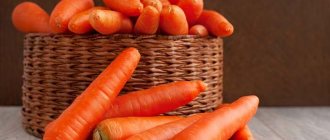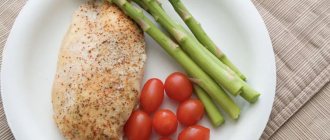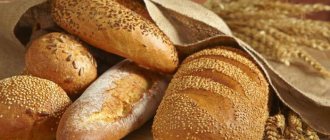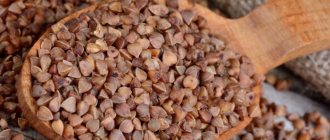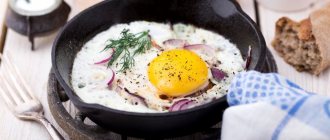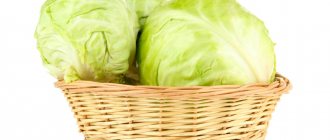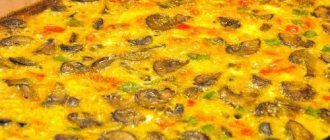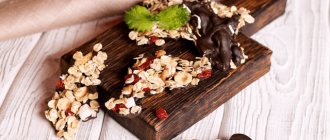Recipes and calorie content of some onion dishes
Due to the fact that onions themselves are low in calories, they can be used in all dishes.
But when frying, onions become less dietary. Therefore, it is unlikely that potatoes with mushrooms and fried onions can be called low-calorie food. Dietary dishes with onions are mainly soups and salads. For weight loss, an onion diet was created, during which you can lose 5 kg in a week.
Onion soup recipe for weight loss with photo
This soup is one of the lowest calorie dishes containing onions. It will require:
- chicken broth or clean water (1.5 liters);
- cabbage (400-500 grams);
- celery (120 grams);
- fresh onions (5 pieces);
- salt (1/2 teaspoon)
Cut the onion into half rings, finely chop the cabbage, cut the celery into small cubes. Place everything in a saucepan, add broth or water. After boiling, reduce heat and cook for 20-30 minutes. Salt at the very end. The calorie content of this soup per 100 grams is only 23 kcal.
Leek soup recipe
Leeks are one of the lowest calorie types of onions. For dietary soup with it we will need:
- water (3.5 liters);
- young potatoes (4 pieces);
- medium carrots (3 pieces);
- parsley root (2 pieces);
- leek (600 grams);
- butter (3 teaspoons).
Place carrots and parsley root in water, cook until tender. After straining, add diced potatoes and thinly sliced leeks to the resulting liquid. The soup will be ready when the potatoes and onions are boiled. Add butter before serving.
It turns out delicious, and most importantly healthy. 100 grams of soup contain 13 kcal.
Green onion salad
This is a familiar cucumber-tomato salad; to prepare it you need:
- medium tomatoes (150 grams);
- medium cucumbers (150 grams);
- fresh green onions (60 grams);
- low-fat sour cream (1 tablespoon).
Everything is very simple. We cut tomatoes and cucumbers into small cubes, green onions into rings. Put everything in a salad bowl, add sour cream and mix.
The salad is really easy to prepare, nutritious and refreshing in hot weather, and there are very few calories: only 44.5 kcal per 100 grams of dish.
Greek salad
Greek salad with red onion is a favorite for many people. To prepare it you will need:
- medium tomatoes (4 pieces);
- medium cucumbers (3 pieces);
- small red onion (1 piece);
- olives (9 pieces);
- feta cheese (70 grams);
- olive oil (10 grams).
Cut tomatoes into quarters, cucumbers into slices, onions into half rings. Mix everything with the addition of olive oil. Cut the cheese into small cubes. When serving, garnish with olives and cheese.
The salad turns out to be low-calorie: 100 grams of salad accounts for 50.3 kcal.
Salad with egg and onion
The simplest salad, tasty and satisfying. It only requires three ingredients:
- large chicken eggs (5 pieces);
- fresh green onions (200 grams);
- low-fat sour cream (4 tablespoons).
Boil the eggs hard, peel and cut into cubes. Cut the onion into rings. Place in one container, add sour cream and mix.
100 grams of salad contain 177 kilocalories.
Energy value of raw, boiled and pickled onions
Fresh onion tubers are the most beneficial for health. It will not harm your slimness either, as it contains a minimum of calories. And considering that you are unlikely to eat a whole head, there will be even fewer of them. Heat treatment and preservation take away from the vegetable the small energy reserve it has. This is easy to verify if you look at the calorie content of raw onions and cooked in different ways. And it will be like this:
- fresh onion – 41 kcal;
- boiled – 36 kcal;
- baked – 36 kcal;
- pickled – 19 kcal;
- canned – 19 kcal;
- fried in vegetable oil – 251 kcal.
Thus, for those losing weight, the best option is canned onions, because the calorie content per 100 grams is reduced by almost 2 times, but all the healing and taste benefits of the fresh vegetable are preserved. In addition, it consists of 95% water, so it will not increase fat deposits in the abdomen and thighs. So, if you don’t want to scare others with the pungent onion smell or can’t stand the taste of a natural vegetable, eat pickled one. Its culinary properties are highly appreciated even by gourmets
Many, looking at the impressive amount of calories in the onion fry, will exclaim “Wow!” and cross it off their menu. And this is a big mistake. After all, there will be very little fried onion in a bowl of soup (certainly it will not contain 100 g). Therefore, even in this form, the vegetable will not spoil the figure.
What can you cook?
Beer.
calorie content 1 liter, 100 grams, proteins, fats, carbohydrates, composition Every housewife will probably remember a couple of dishes where onions will definitely be present. There are several recipe options for onion soup with croutons and cheese. Fans of French cuisine will surely like it.
And in almost any first course there are fried pieces of onion. It is added to many salads and meat snacks. Vegetarians treat themselves to onion cutlets.
But few people know that pies, cakes and even marmalade are made from onions. To do this, the onions are pickled and then caramelized. True, such desserts should be eaten on the day of preparation, because later their taste changes greatly.
Onion diet: cry and lose weight?
When we talk about the benefits of vegetables, first of all, we mean their rich mineral and vitamin composition. But onions, whose calorie content per 100 grams barely reaches 40, are also indispensable for weight loss. The tubers of this plant are able to prevent the formation of fat cells, and also have a positive effect on metabolic processes, as they contain rutin.
The onion soup diet enjoys enormous popularity and an excellent reputation. It is simple, accessible and very effective. Its duration is only 7 days, during which you should eat soup three times a day from the following ingredients:
- onion;
- tomatoes;
- cabbage;
- bell pepper
You can supplement the menu with fruits and lean meats. In a week, the result of the onion’s effect on the figure will be noticeable to everyone.
Calorie content of green onions
Beef liver. calorie content per 100 grams, composition, proteins-fats-carbohydrates. benefits and harms of dieting
The calorie content in green onions is perhaps the lowest - 20 kcal per hundred grams of product. Also, the calorie content of green onions includes proteins, fats and carbohydrates in minimal quantities. Therefore, those people who are on any diet, having found out how many calories are in green onions, can include it in their diet.
In addition to the low calorie content of green onions, they are very beneficial for the human body. Its beneficial properties are no less useful and diverse than the beneficial properties of onions.
Green onions are best known for their preventive properties in the fight against colds. It improves immunity and strengthens the human body. Green onions help to cope with stressful situations and restore lost pep.
Green onions contain a lot of zinc, which has a beneficial effect on reproductive functions. It also includes vitamin C and calcium, strengthens the cardiovascular system, and maintains blood pressure within normal limits.
If you eat this product in moderation, it helps improve digestion and cleanses the body of harmful substances. Green onions are added to various dishes, as they increase appetite and provoke the secretion of gastric juice.
As noted above, the caloric content of onions is low, only 20 kcal per hundred grams of product, so it not only adds taste to dishes familiar to everyone, but also cannot harm the figure.
It is preferable to consume green onions fresh, as an addition to vitamin-rich salads, since heat treatment will leave less of the beneficial substances contained in onions. In addition, green onions have an antiseptic effect and destroy many known pathogenic bacteria.
Red onion
Red onion as a variety is becoming increasingly popular. This can be explained by its increased juiciness and sweetish taste.
It is also important that it contains twice as many antioxidants as its light-headed relatives . In addition, red onions look very impressive in dishes.
The calorie content of red onions is almost the same as that of regular white onions - approximately 42 kcal.
By introducing onion dishes into your daily diet, you will not only enrich your body with useful substances and minerals, but also help it set a course for healthy, low-calorie, and, at the same time, healthy recovery.
Chemical composition: KBJU (calories, proteins, fats, carbohydrates)
“umalat” (Adyghe cheese): composition, calorie content, reviews, recipes
Let's consider what is contained in the vegetable - what is its energy, nutritional, vitamin value, what mineral elements it contains.
How many calories are in onions: raw, boiled, sautéed, baked?
The energy value of the product varies depending on the method of its preparation:
- dried (dehydrogenated) in the form of flakes - 349 kcal;
- dried shredded - 208 kcal;
- calorie content of fresh (raw) onions - 42 kcal;
- fried (passivated) - 123 kcal;
- baked onions without oil - 47 kcal;
- pickled - 82 kcal;
- boiled calorie content - from 40 to 44 kcal;
- deep fried - 239 kcal.
Which cooking method has the most calories in a vegetable?
The next most calorie-rich vegetables are dried vegetables, cut into rings or half rings, deep-fried and sautéed. Baked, boiled and raw are the lowest calorie options.
Calorie content of red and white onions: is there a difference?
Yes, there is a difference. This is not to say that it is significant. How many kilocalories a particular variety contains depends on the difference in the content of proteins, carbohydrates and other substances. Regular onions contain 42-44 kcal per 100 g, and sweet varieties - 32-35 kcal. At the same time, the white variety, the purple one, and the red one can be sweet.
Nutritional value: BJU per 100 grams
The nutrient content of the product is presented in the table.
The BJU of pickled onions is indicated for a vegetable cooked with vinegar, vegetable oil, sugar, salt and spices. The “Fried” column shows indicators for the sautéed product. If deep frying is carried out, the protein content in the product will be 4.8 g, carbohydrates - 25.3 g, fat - 14 g, dietary fiber - 9.4 g.
What vitamins do onions contain?
If we take into account the percentage of the body’s daily need for vitamins, then the vegetable in this regard contains the most ascorbic acid - it is found in large quantities in the product. The following vitamins are found in onions: The chemical composition of red onions differs little from white ones in terms of vitamins.
The only difference is in the composition of the husk, which is used in folk medicine - the white one has virtually no vitamin C
The chemical composition of red onions differs little from white ones in terms of vitamins. The only difference is in the composition of the husk, which is used in folk medicine - the white one has virtually no vitamin C.
Macronutrients
The vegetable contains a lot of potassium, phosphorus, and sulfur. The detailed macronutrient composition can be found in the table.
Of the macroelements, blue and red bulbs contain more sulfur compared to white ones. This makes it more useful for cleansing the blood, removing cholesterol, and hematopoietic processes. This element is also necessary for the synthesis of cysteine - this amino acid is important for the renewal of elastin and collagen.
Microelements
Let's see which microelements are the leading content in the product.
The vegetable also contains aluminum, boron, nickel, and rubidium. Red varieties of onions contain more trace elements than chromium. This element helps lower blood glucose.
Sugar content per 100 g
Simple carbohydrates of onions are represented by mono- and disaccharides in the amount of 8.2-8.8 g, which include:
- sucrose - 6.5 g;
- glucose (dextrose) - 1.3 g;
- fructose - 1.1 g.
These are averages and may vary slightly depending on how sweet the variety is.
What other substances does onion contain?
Onions contain a lot of vitamins and microelements. But besides them and nutrients, the vegetable contains valuable biologically active compounds:
- Phytoncides are volatile substances that have a detrimental effect on bacteria, protozoa and viruses.
- The flavonoid quercetin is not an essential nutrient, but has a pronounced anti-inflammatory and antioxidant effect.
- Allicin is one of the main active substances in garlic, but is also found in onions; has strong antibacterial activity, which it retains in both gastric juice and blood.
- Anthocyanins - compounds from the group of glycosides, are present in purple and red onions and their peels, causing their color; reduce inflammation and oxidation processes in cells (that is, they are antioxidants).
- Organic acids - malic, citric and others.
Chemical composition of onions
100 grams of fresh product contains the following vitamins:
- beta-carotene - 1 mcg;
- lutein + zeaxanthin - 4 mcg;
- B1 - 46 mcg;
- B2 - 27 mcg;
- B4 - 6.1 mg;
- B5 - 0.123 mg;
- B6 - 0.12 mg;
- B9 - 0.019 mg;
- C - 7.4 mg;
- E - 0.02 mg;
- K - 0.4 mcg;
- RR - 0.116 mg;
- betaine - 0.1 mg.
Important! When treating with this vegetable, you should consult your doctor. Onions reduce the effect of some medications.
Minerals:
- potassium - 146 mg;
- calcium - 23 mg;
- magnesium - 10 mg;
- sodium - 4 mg;
- phosphorus - 29 mg;
- iron - 0.21 mg;
- manganese - 0.129 mg;
- copper - 0.39 mg;
- selenium - 0.5 mcg;
- fluorine - 1.1 mcg;
- zinc - 0.17 mg.
The raw vegetable contains phytoncides, enzymes, saponins and flavonoids, including quercetin.
How many calories are in fried onions?
Onions are one of the most commonly found vegetables in the world. It has many beneficial properties, such as maintaining blood sugar balance and helping those wishing to lose weight. Many diets use onions both as an additive to main dishes and as a main ingredient.
Useful properties and calorie content of onions
The most popular and in demand, both in the kitchen and in the home pharmacy, is onion, which has many beneficial properties and gives any dish a unique taste and aroma.
Speaking about how many calories are in onions, first of all, it is worth talking about its medicinal properties, and it is they that are used in folk medicine most often. Phytoncides, contained in large quantities in onions, deserve special attention.
This allows it to be used for the prevention and treatment of infectious and colds.
Onions also contain a large amount of ascorbic acid (vitamin C), which strengthens the immune system and gives the body additional protection.
It should also be noted that onions help the functioning of the digestive organs, stimulating the production of gastric juice and increasing appetite due to the essential oils present.
However, if you have problems with high acidity, it is better to refrain from excessive consumption of onions.
Being the healthiest of all types of onions, onions have a higher calorie content, which, however, does not play a big role and does not lead to excess weight.
Knowing how many calories are in onions, and 100 grams of the product contains only 43 calories, you can safely include it even in a diet for weight loss. Struggling with extra pounds, many ask themselves the question of how many calories are in fried onions.
It has been proven that the number of calories in boiled onions is reduced to 37 kcal, while fried onions already contain 250 kcal per 100 grams of product, so it is better not to eat fried onions as a separate dish.
When talking about onions, we cannot keep silent about white onions, which are especially popular in European cuisine and the French even make the famous onion soup from it.
In this indicator, it can be compared with white onions, since 100 grams of white onions contain only 40 kcal, which allows us to call white onions a dietary product.
Harm of fried onions
However, it should be noted that fried onions are harmful, because, like most fried foods, they do not have any benefits for the liver. In addition, during heat treatment, onions partially lose their beneficial substances, of which, by the way, the finished product still contains a lot. The calorie content of fried onions is approximately 251 kcal.
How many calories are in different types of onions?
At the moment there are many types of onions.
They all have different calorie content, taste, color, smell and are used for different types of dishes. Onions can be eaten raw, boiled, fried, or stewed. If it is green onions, then it can be consumed either fresh or dried. Depending on what type of onion it is and how it is prepared, its calorie content also changes.
The most high-calorie and unhealthy dishes were exposed to high temperatures during preparation.
Calorie content of different types of onions per 100 g
- Fresh green onions – 19 kcal / 100 g
- Leek - 33 kcal / 100 g
- Boiled onions – 37 kcal / 100 g
- Stewed onions – 39 kcal / 100 g
- Fresh onions – 41 kcal / 100 g
- White onion - 41 kcal / 100 g
- Red onion - 41 kcal / 100 g
- Yalta onion - 42 kcal / 100 g
- Shallots – 72 kcal / 100 g
- Dried green onions - 219 kcal / 100 g
- Fried onions – 251 kcal / 100 g
- Onions fried in batter - 329 kcal / 100 g
Leek calories
Relatively recently, leeks appeared in our kitchen, attracting attention with their appearance. Those who want to know how many calories are in leeks will find useful information about what beneficial properties they have
Research shows that leeks contain vitamin C, the amount of which it surpasses onions and green onions, and the amount of vitamin A needed for the eyes, it surpasses even carrots. Leeks have a positive effect on the human immune and cardiovascular system, and they are very filling, although their calorie content is only 35 kcal per 100 grams.
How it is used in dietetics and for weight loss
- Onions prevent fat cells from developing and speed up metabolic processes, which is why it is used to combat excess weight. This effect is due to the presence of rutin in onions.
- In addition, it has a significant effect on the functioning of the diuretic organs, increases the production of insulin in the blood, which is important in the process of losing weight. Leeks are especially effective in such actions. It has a mild taste, is in no way inferior in beneficial properties to its onion counterpart, has few calories, and is indispensable for an onion diet. This is a regular diet, the diet of which consists of vegetables, and you need to eat onion soup three times a day.
- Vegetables should not be fried in a frying pan; meat should be excluded from the diet. For variety, you can try baked, pickled onions; you can eat them in any way, there will be no harm. Nothing special, just a low-calorie product, you won’t eat much, but it still attracts attention when eating on a diet.
- When losing weight, onion product can help not only with internal, but also external effects. Onion juice wraps are popular today, they help fight cellulite, reduce body volume, and make the skin on the stomach, thighs, and buttocks smooth. You only need to remember about physical exercise during the process of losing weight; together with nutrition, they can give good results.
The benefits of onions
Each of us has heard about the great benefits of onions since childhood. The main useful properties of the product are:
- the product has an anti-inflammatory and bactericidal effect against colds and ARVI;
- onions are characterized by a high content of flavonoids, which prevent the formation of cancer cells;
Interesting: Calorie content of milk powder
- Numerous studies have shown that eating onions is an effective way to stimulate male potency. In the Middle Ages, due to its stimulating effect, the product was banned in all monasteries;
- Eating onions daily speeds up metabolism and ensures effective cleansing of the body from toxins;
- inflammatory bowel diseases have been treated since ancient times with the help of onion juice;
- onions are an excellent diuretic and reduce cholesterol levels in the blood;
- in combination with honey, the vegetable is indicated for bronchitis;
- With the help of onion infusion you can quickly get rid of helminths.
We can talk a lot more about the benefits of onions. However, it is already clear from the list presented above that this product must be present in the diet.
Homeland, distribution
The origin of this vegetable has not yet been established. But some researchers believe that this plant first appeared in Central Asia, Asia (southwest) and the Mediterranean. It was from there that the onion moved to Egypt, then to Greece and many other countries. It is now found wild in Turkey, Afghanistan and Uzbekistan.
Hunters and shepherds of Afghanistan, Iran and Turkmenistan were the first to experience the taste of wild onions. It grew in the mountain meadows of these countries. Onions were able to adapt to conditions where there was little moisture and shallow soil. This vegetable has many thin roots, and the bulb is protected from drought by tightly fitting dry scales. The more there are, the longer the vegetable can be stored.
2
Chemical composition and benefits of fresh onions
Fresh onions contain:
- vitamins B, C;
- essential oils;
- zinc;
- fluorine;
- iodine;
- iron;
- copper;
- cobalt;
- nickel;
- flavonoids;
- vegetable acids.
Beneficial properties of raw vegetables:
- anti-inflammatory;
- bactericidal;
- anti-cold;
- anticancer;
- metabolic;
- diuretic.
Regular consumption of onions increases male potency and increases sperm quality. Vegetable juice is used to treat bronchitis, sinusitis, ARVI and acute respiratory infections. It helps cure intestinal diseases and reduce blood cholesterol levels. Onion infusion effectively fights worms.
Composition and calorie content of cucumber, benefits and harm to the body
3
Contraindications
Excessive consumption of raw vegetables can cause serious harm to the body. You cannot treat diseases with onions without consulting a specialist.
Contraindications for use:
- individual intolerance;
- increased gas formation;
- allergic reaction;
- liver diseases;
- gastritis;
- ulcers.
People with stomach diseases and a tendency to heartburn should eat the vegetable with caution.
Korean carrots in the dietary system
Benefits and harms
Beneficial properties of onions for the body:
- active against pathogenic microbes: viruses, bacteria, fungi;
- increases appetite;
- removes excess cholesterol, cleansing blood vessels, thereby providing a preventive effect against atherosclerosis;
- has an anti-inflammatory effect;
- has a detrimental effect on intestinal parasites;
- replenishes the body with vitamins, macro- and microelements, providing a general strengthening effect.
Onions are used for colds, coughs, flu, headaches, varicose veins, high blood pressure, prostatitis, stomatitis, bleeding gums and many other diseases.
The harm of the product consists of a possible exacerbation of diseases of the kidneys, liver, gastrointestinal tract and heart, increased stomach acidity, lethargy, drowsiness, diarrhea, bloating, and allergic reactions.
For men
Valuable properties of the vegetable for men's health:
- increases libido, enhancing sexual desire;
- stimulates testosterone production;
- helps in the treatment and prevention of prostatitis, impotence, prostate adenoma;
- increases sperm volume and quality.
The vegetable is also an effective remedy for the prevention and treatment of hair loss, as it increases blood flow to the scalp and strengthens the hair follicles.
For women
Benefits of vegetables for women's health:
- normalizes the menstrual cycle, helps in the absence of menstruation;
- has an anti-edematous effect;
- strengthens hair, improves skin condition;
- good for reproductive health in general thanks to zinc and vitamins.
Note: For menstruation, in the absence of pathological reasons, drink an infusion of onion peels, brewing 2 tbsp. l. raw materials 300 ml boiling water for an hour. This volume is drunk in three doses the day before meals - 100 ml each.
For children
Due to the content of phytoncides, vitamins, and mineral components, onions are useful for children as a general tonic and as an addition to the treatment of coughs and acute respiratory infections. For therapeutic purposes, the vegetable can be used no earlier than the child turns 3 years old and after prior consultation with a doctor.
The low glycemic index and calorie content of onions, the presence of vitamins, mineral elements, and biologically active substances (antioxidants, flavonoids) make the vegetable very beneficial for human health. Red and purple varieties contain in their chemical. contains anthocyanins, more chromium, sulfur and quercetin, which is more useful for diabetics, cleansing blood vessels, preventing colds, flu and atherosclerosis.
Read further:
The richer you are, the happier you are: chemical composition and calorie content of onions per 100 g
Chemical composition, calorie content and properties of dill. What do greens contain and how are they beneficial?
Description of the chemical composition of black radish, including calorie content: benefits and contraindications for use
Everything about the chemical composition of white cabbage, including calorie content and nutritional value
What benefits peppermint contains: chemical composition and calorie content of the plant
Useful and dangerous properties
Thanks to the substances it contains, onions are widely used in medicine, science, and are also included in various recipes used in cooking. Many nutritionists use it in their weight loss programs, and cosmetologists use it as a remedy against flaky skin, hair loss, and even against wrinkles.
But along with its beneficial properties, onions also have a negative aspect. It should not be consumed by people suffering from intestinal diseases and diseases of the digestive system, as it increases the acidity of gastric juice. This vegetable also negatively affects the nervous system, which can, in turn, cause increased blood pressure or an asthma attack. The most minor of the dangerous properties of onions is bad breath. There are many different ways to get rid of it: eat a walnut, a parsley leaf or a crust of bread, or chew a roasted coffee bean. But all this will only mask the smell, and after a while it will return again.
Onions in recipes:
Cabbage and breast salad 76.61 kcal/100 g. Recipe
Pangasius baked with onions 83.13 kcal/100 g. Recipe for pangasius baked with onions
Zucchini cutlets 89.45 kcal/100 g. Recipe for making zucchini cutlets
Chicken zrazy with egg 140.22 kcal/100 g. Recipe for chicken zrazy with egg
Salad “Generous Autumn” 73.94 kcal/100 g. Recipe for salad “Generous Autumn”
Mushroom and squid salad 69.27 kcal/100 g. Recipe for mushroom and squid salad
Mushroom solyanka 27.39 kcal/100 g. Recipe for mushroom solyanka
Pumpkin puree soup “Carriage for Cinderella” 28.4 kcal/100 g. Recipe for pumpkin puree soup “Carriage for Cinderella”
Kababi 160.23 kcal/100 g. Kababi recipe
Stuffed peppers 65.76 kcal/100 g. Recipe for stuffed peppers
Squid with cheese and mushroom filling 133.28 kcal/100 g. Recipe for squid with cheese and mushroom filling
Fish cutlets with cauliflower 117.81 kcal/100 g. Recipe for making fish cutlets with cauliflower
Salad with mussels 111.16 kcal/100 g. Recipe for salad with mussels
Pink salmon baked in sour cream and mushroom sauce 100 kcal/100 g. Recipe for pink salmon baked in sour cream and mushroom sauce
Vegetable stew with red beans 52.7 kcal/100 g. Recipe for vegetable stew with red beans
Chicken pancakes 121.6 kcal/100 g. Chicken pancakes recipe
Soup with chicken and dumplings 53.21 kcal/100 g. Recipe for soup with chicken and dumplings
Rice with ginger 89.46 kcal/100 g. Recipe for rice with ginger
Celery soup 11.13 kcal/100 g. Celery soup recipe
Chicken with rice and olives in a pot 111.93 kcal/100 g. Recipe for chicken with rice and olives in a pot
Tomato soup with squid 30.05 kcal/100 g. Recipe for tomato soup with squid
Baked potatoes with herbs 118.22 kcal/100 g. Recipe for baked potatoes with herbs
White fish fritters 112.16 kcal/100 g. Recipe for white fish fritters
Vegetable puree soup with fried mushrooms 68.92 kcal/100 g. Recipe for vegetable puree soup with fried mushrooms
Chinese salad 93.78 kcal/100 g. Chinese salad recipe
Rice casserole with mushrooms 119.34 kcal/100 g. Recipe for rice casserole with mushrooms
Moussaka with eggplant 37.28 kcal/100 g. Recipe for making moussaka with eggplant
Celery soup for weight loss 29.99 kcal/100 g. Recipe for making celery soup for weight loss
Chicken liver roll 124.06 kcal/100 g. Chicken liver roll recipe
Aromatic tomato and bean soup 155.77 kcal/100 g. Recipe for making aromatic tomato and bean soup
Helpful cooking tips
There are the following recommendations for using onions:
- To prevent the peeled and cut head of the vegetable from drying out, it should be placed cut side down on a saucer with salt. You can also store it in an airtight container in the refrigerator. You can also grease the cut area with fat - this will also keep the onion fresh.
- To prevent this vegetable from causing tears due to its pungency, you need to cut it by putting your hands with the onion in a container with cool water.
- If you process onions near the stove that is on, your eyes will not water. You can also rinse the knife with cold water to get rid of watery eyes.
- Frozen vegetables should not be brought into a warm place to avoid spoilage. This product should be used immediately for food. Before use, it must be immersed in cold water for 3 hours, then its taste will not change.
- To prevent your hands from smelling after working with such a product, you can wipe them with salt, a weak solution of vinegar or coffee grounds, and then wash them with warm water and soap. To prevent the knife from smelling like onions, you also need to wipe it with salt.
- For slicing, it is better to use a plastic board, as it does not absorb onion juice as much as wood.
- To prepare the soup, the vegetable is finely chopped or fried. Don't throw the whole head into the soup. For frying, the onion is also cut into cubes, not rings.
- You can color the broth with a decoction of onion peels. In addition, this will make the soup more nutritious and healthy.
- If you took a vegetable for a salad, then you can remove the bitterness from it by placing it in a colander and pouring boiling water over it. To reduce bitterness, the chopped vegetable is washed in cool water.
- If you lightly sprinkle the onion with powdered sugar when frying, it will taste better and acquire a beautiful golden crust.
- To ensure that the chopped vegetable does not burn during frying and has a pleasant appearance, it can be dipped in flour the day before the process.
- When stewing, this product is laid out in a layer of no more than 4 cm.
- To prepare salads, it is better to take sweet varieties of this vegetable.
- When marinated, it is used for salads, as a side dish for cold fish, especially herring, and also for cold meat.
Raw onions have a lot of beneficial properties and are very healthy, but they are not a dietary food.
For many gastrointestinal problems, children and nursing women should consume a boiled product, which contains slightly less useful substances, but is not as irritating to the mucous membranes. Was this article helpful?
Thank you for your opinion!
Write in the comments what questions you have not received an answer to, we will definitely respond!
You can recommend this article to your friends!
Already helped once
Calorie content, BJU and glycemic index of onions per 100 g
Fresh vegetables have a low glycemic index (GI), it does not provoke a sharp rise in blood sugar, and therefore is not contraindicated for people with diabetes. The energy value of the product and GI vary depending on the method of its preparation:
| Method of preparation and type of onion | Calorie content | Proteins, g | Fats, g | Carbohydrates, g | GI |
| fresh | 42 kcal | 1,1 | 0,1 | 9 | 10 |
| boiled | 42 kcal | 1,36 | 0,19 | 8,75 | 15 |
| fried | 258 kcal | 3,2 | 14 | 31 | 98 |
| stew | 48.5 kcal | 1.35 | 0.05 | 7.9 | 15 |
| baked | 36.6 kcal | 1,3 | 1,78 | 8,4 | 15 |
| green onions | 32 kcal | 1,8 | 0,2 | 7 | 39 |
| leek | 61 kcal | 1,5 | 0,3 | 14 | 15 |
| shallot | 72 kcal | 2,5 | 0,1 | 17 | 32 |
| onion | 41 kcal | 1,4 | 0,2 | 8,2 | 10 |
It is worth keeping in mind that when adding salt to onions, its calorie content increases by 2-3 kcal. Other additives, spices, sauces, oils, etc. also play a role. In the same way, the glycemic index changes when cooked - for example, caramelizing onions in sugar will significantly increase the GI.
Is there a difference in calories between red and white onions?
It cannot be said that it is the color of the bulbs that affects its nutritional value. Also, the number of calories depends on the content of proteins, fats and carbohydrates in the vegetable. The calorie content of classic onions is 42 kcal, and sweet varieties - 32-35 kcal. Any onion can be sweet, regardless of color.
Glycemic index
The glycemic index is a measure of the effect of food on blood glucose levels after consumption. The higher it is, the higher the sugar rises. After heat treatment, GI increases.
The glycemic index of onions in raw form is 10 , in boiled form - from 15 to 20 , in fried - 90 and above .
The healthiest and lowest-calorie vegetable is always raw.
The raw product contains sucrose. During heat treatment, it breaks down into glucose and fructose. The glucose level increases, joining the already existing amount of this substance and, accordingly, is absorbed faster by the body. In addition, amino acids react with sugars during frying. The resulting substances are also absorbed faster than their original components.
As a result, the glycemic index increases and can lead to a spike in blood sugar.
Cereals and legumes
Cereals supply the complex carbohydrates the body needs for a balanced diet.
Consuming slow-acting carbohydrates prevents a sharp rise in blood glucose and keeps you full for several hours. In addition to carbohydrates, legumes contain a large amount of vegetable protein. Calorie content of cereals and legumes per hundred grams:
| Cereals | Calorie content per 100 g of dry product | Calorie content per 100 g of prepared product |
| Buckwheat | 346 | Porridge on water: 132 |
| White rice | 330 | Porridge with water: 97 Porridge with milk: 116 |
| Brown rice | 330 | Porridge on water: 97 |
| Lentils | 310 | Boiled: 111 |
| Beans | 328 | Boiled: 123 |
| Millet | 351 | Porridge with water: 100 Porridge with milk: 135 |
| Semolina | 340 | Porridge with milk: 98 |
| Pearl barley | 342 | Porridge on water: 106 |
| Oats | 374 | Porridge with water: 88 Porridge with milk: 102 |
| Cereals | 365 | Porridge with water: 76 Porridge with milk: 100 |
Contraindications for the human body
- There are contraindications for consuming this product raw:
- pancreatitis;
- gastrointestinal ulcers, gastritis;
- individual intolerance;
- increased nervous excitability;
- for exacerbations of kidney, heart and liver diseases.
This product should be taken with caution during pregnancy and lactation. In asthmatics, in its raw form it can cause an attack. There may be an allergic reaction or individual intolerance to it.
Harm and contraindications for use
Harmful properties of green onions:
- specific odor from the mouth after consuming the product;
- irritation of the gastric mucosa;
- increased acidity of gastric juice;
- heartburn and belching;
- reducing the effect of blood thinners.
Contraindications:
- inflammatory liver diseases (hepatitis, cirrhosis);
- stomach ulcer, gastritis;
- bacterial diseases of the gastrointestinal tract;
- high blood pressure;
- bronchial asthma;
- allergy;
- exacerbation of obstructive pulmonary pathologies;
- pancreatitis.
In the remission stage of inflammatory diseases of the pancreas and gastrointestinal tract, the product is introduced into the diet gradually and only after consultation with the attending physician. Green feathers are thermally treated to reduce the negative impact on the body.
The ban on eating onions during inflammatory processes in the pancreas is due to the presence of aggressive essential oils in the product, which promote increased secretion of the organ. Fiber, which is part of green feathers, increases gas formation, causing painful and unpleasant sensations.
Benefits for weight loss
The unique ability of onions to dissolve fats without any damage to the body is widely used in all kinds of weight loss diets. Onion decoctions help remove toxins and harmful substances from the body, and also improve metabolism.
The vegetable is included in various light vegetable salads, including during Lent. Despite the low calorie content, the carbohydrate content of onions is quite high, so it should be used only to enhance the taste of dishes. In addition, if consumed in excess, bad breath appears, the oral mucosa may become inflamed, and excessive drowsiness may occur.
Features of use
It is worth noting that regular consumption of onions has a positive effect on the entire body, it strengthens the immune system and gives vitality.
For men
Constant consumption of onions by males increases potency, enhances libido, and has a good effect on the quality of semen. This product is also an excellent prevention against prostate adenoma. This vegetable is often included in the diet for many diseases, as it has an anti-inflammatory effect, is a diuretic and prevents the appearance of tumor formations.
This product not only inhibits the appearance and development of adenoma, but also improves overall well-being by enhancing the immune system. Onion peels are good for certain symptoms of benign prostatic hyperplasia (BPH). A decoction of it reduces pain when taken regularly. At the same time, take a freshly prepared decoction. Moreover, the best results are obtained by mixing onions with honey or other bee products.
For women
Onions are recommended to be included in the menu for women who want to conceive a child, since this product contains enough zinc, which helps normalize reproductive function. The vegetable also contains a lot of iron, so it must be consumed when hemoglobin is low. This product is relevant in the diet of pregnant and lactating women (boiled), since it contains vitamin B9, which is required for the normal development of the fetus.
Read also: Flushing the heating system in a private house
The vitamins and antioxidants contained in this vegetable contribute not only to better health, but also to a better appearance and promote weight loss. Women use this vegetable for cosmetic purposes. You can make a face mask from it at home. To do this, use the product or its juice in raw form or in combination with other products. Onion juice without additives smoothes and brightens the skin and is an excellent remedy for skin pigmentation.
This product perfectly promotes hair strengthening and growth, helps with hair loss and fights dandruff. A decoction of onion peels gives the hair a golden hue, and also nourishes the hair and makes it shiny. The only drawback is that when used for cosmetic purposes, this vegetable gives off a specific smell. But after a while it still dissipates, so for the sake of getting a good result, you can ignore it.
For children
Nutritionists recommend including this vegetable in children's diets. It improves appetite and the digestive process, strengthens bones and blood vessels. This product is simply a storehouse of vitamins for a child’s body; it contains vitamins C and E, which are necessary at this age. Onion juice with warm milk helps children fall asleep soundly, and all dishes using raw vegetables are an excellent preventive measure against worms without side effects.
However, children should be introduced to this vegetable by first giving them a boiled product. Boiled vegetables can be given to babies from 8 months. It is usually given in pureed vegetable soups. It goes well with potatoes, pumpkin, zucchini, and carrots. You can add a small amount to your baby’s first puree soup – a quarter of a small onion. The raw product can be introduced into a child’s diet no earlier than three years of age. It is best added to salads.
Recipes for use in traditional medicine
Onions are not only a useful product, but also widely available due to their low cost, which leads to their widespread use in treatment.
There are many recipes where onions are the main component for the treatment of diseases such as:
- gout;
- haemorrhoids;
- ARVI, influenza;
- diabetes;
- gastritis;
- pancreatitis;
- hypertension;
- urolithiasis disease.
Onions also help with coughs, helminthic infections, sore joints, liver, and stomach.
From nerves
Thanks to the high content of iron, vitamins B1, B6 and B9, onions are good for coping with stress during times of emotional exhaustion or nervous overexcitation. The vegetable can cause drowsiness, which will help you relax if you have insomnia or loss of sleep due to excessive anxiety. You can simply include the vegetable in your diet by adding it to fresh salads, or to first and second courses.
You can also consume fresh vegetable cocktails (smoothies) every day, where onions are one of the ingredients:
- a small bunch of greens (celery, parsley, dill), onion (one small head), cucumber, kefir (250 ml) - puree all ingredients in a blender and consume immediately;
- onions, several peeled tomatoes, and herbs to taste, also mix using a blender and eat freshly prepared.
Against cough
Onions, whose benefits for colds are enormous, are most often included in cough recipes. However, you should not forget that the recipes are not suitable for those who suffer from allergies or have problems with the gastrointestinal tract, so as not to harm the body.
- warming ointment – 1 onion is ground into a paste (on a grater or blender) and combined with 3 tablespoons of goose fat. Apply to the neck and chest area, covering the areas where the ointment was applied. Procedures are done before bedtime;
- dry cough syrup - finely chop 1 onion and place in a small jar, where add 3 tbsp. Sahara. Leave for 2 hours. During this time, the juice of the vegetable is released, which, mixed with sugar, forms a syrup. This syrup is very effective for dry, non-productive coughs; in the absence of allergies, it can be given to children. If you have a frequent suffocating cough on the 1st day, drink 1 tsp of syrup every hour, after the onset of relief on days 2-3, 3-4 times a day, 1 tsp.
- Honey-onion syrup is an excellent expectorant. The juice of 2-3 onions is combined with 2 tbsp. honey Take 3-4 times a day until symptoms disappear.
From parasites
Due to the content of special phytoncides, onions are an excellent anthelmintic. These substances help remove eggs and larvae of parasites from the body and kill pathogenic microorganisms. To fight, use onion tincture.
To do this, pour 200 ml of boiling water over one chopped onion, leave overnight and take half a glass in the morning before breakfast for no more than 3-4 days in a row.
For hemorrhoids
The use of onions in the form of suppositories or lotions for hemorrhoids is questionable, since the inflamed intestinal mucosa may become even more irritated due to it. An effective way is a steam bath made from milk and onions. To do this, cut 2 onions and pour 1 liter of milk and place the mixture in the oven.
Heat until steam appears, pour everything into a container (basin or pot) and perform the heating procedure.
For gout
Nutritionists recommend consuming onions for gout in moderation.
It is a small amount of vegetable that will help remove uric acid without harm to the body.
- Compresses and infusions are used to relieve swelling and inflammation. Finely chop 3-4 onions and add 0.5 liters of alcohol or vodka. Leave for 2 weeks in a dark place, after which it is used for rubbing sore spots and applying compresses;
- To remove uric acid, a mixture is prepared for oral administration. Take equal parts of garlic, onion and cranberries, chop everything and combine. Leave for 24 hours, then consume 1 tsp. on an empty stomach.
For hypertension
Onions have a beneficial effect on blood pressure, normalizing it. It is recommended for consumption in raw form for people suffering from sclerosis, thrombosis, and hypertension. To combat high blood pressure, onions are included in various recipes that help relieve a hypertensive crisis.
To prepare the medicine you will need:
- 1 small onion;
- 4 cloves of garlic;
- 1 tbsp. dried rowan fruits;
- 1 tsp dill;
- 1 tsp parsley
Garlic, onions and rowan fruits should be ground using a meat grinder or blender. Pour the resulting mixture into 1 liter of water and simmer over low heat for 15 minutes. Then add dill and parsley and cook for another 7-10 minutes. Then remove from heat and let it stretch for 1.5-2 hours. If you have high blood pressure, take 1 tbsp every 3 hours.
For diabetes
Doctors and scientific researchers agree that onions should be included in the daily diet of those suffering from both non-insulin-dependent and insulin-dependent types of diabetes. This vegetable has the unique ability to reduce blood sugar levels due to the presence of allicin. This sulfur-containing substance is found only in garlic and onions.
- Wine tincture. Grind 100-150 g of onion and pour in 2 liters of dry red wine. Let it sit for 10-12 days. Take 15 g daily after meals.
- Vegetable juice. Squeeze 1/3 cup of juice from cabbage, potatoes and onions. Take 35-40 minutes before meals.
For pancreatitis
During the acute stage of pancreatitis, onion consumption is unacceptable in any form. The coarse fibers contained increase the activity of the gastrointestinal tract, which provokes increased pain, vomiting and diarrhea. During the period when pancreatitis does not manifest itself in any way, you can gradually introduce onions into the diet in moderate quantities.
Traditional medicine recommends consuming onions prepared in a gentle way by baking. Such processing will help preserve all the useful components, and the product will be easily absorbed by the body, bringing it maximum benefit.
For gastritis
With gastritis, as with pancreatitis, consuming onions during the active phase of the disease is not allowed. Also, during the period of remission for gastritis with high acidity, the consumption of vegetables remains undesirable. Onions can increase acid production and cause a flare-up. For gastritis, onions can help with reduced secretion.
To do this, the juice of one onion is mixed with water in equal parts and consumed before meals.
For urolithiasis
A good way to remove urinary stones is to use onion broth with sugar. To make it you will need 400 g of sugar and 1 kg of onion. The vegetable is ground in a blender or meat grinder and combined with sugar. The components are boiled for 2 hours and then filtered. The resulting raw material is divided into 4 parts and taken every 4 hours, the first time in the morning on an empty stomach.
Throughout this period, the body undergoes intensive excretion of sand in the urine, which lasts from 3 to 5 days.
For joints
For radiculitis and osteochondrosis, a composition made from onions and black radish will help relieve pain. To prepare the mixture, vegetables are taken in equal parts and grated. The prepared composition is applied to the sore spot for 10-15 minutes, having previously spread it on a piece of natural fabric.
It is also useful for sore joints to ingest onion juice with honey in equal proportions 1:1, 1 tbsp each. before meals 3 times a day.
For the liver
There is evidence that onions help cope with chronic hepatitis, liver intoxication, and organ damage. For treatment, take blue onion, which is able to neutralize and remove glucose from the liver. To prepare the medicine you will need 250 g of sugar and 0.5 kg of onion.
The onion is finely chopped and combined with sugar, placed in a mold and placed in a preheated oven. The medicine is ready when the color of the onion turns caramel. Use 2 tbsp. in the morning before breakfast for 2-3 months.
For the stomach
For stomach diseases, onions should be used with caution, since high acidity can harm the body and aggravate the course of the disease. The contained phytoncides will help stop the development of putrefactive processes, prevent the development of dysentery and diphtheria bacilli, and enhance tissue regeneration.
For treatment, drink freshly squeezed onion juice before meals in courses of 10-12 days with breaks of 30-40 days.
Bulb onions
Onions are a herbaceous perennial of the Onion family, one of the most common vegetable crops. Mediterranean countries, China and Iran used onions for food long before our era; in Russia, the spread of onions began in the 12th century from the Roman Empire.
Onions, depending on the variety, have a round, slightly elongated or flattened scaly bulb, white, purple or golden in color, the outer shell is dry and brittle, inside there are fleshy, juicy scales of white or slightly pinkish color. Onions have a pungent taste and a rather pungent odor.
Composition and beneficial properties of onions
Onions contain a large amount of vitamin C, an antioxidant necessary for the prevention of colds, strengthening the immune system and fighting viruses. A special substance was discovered in onions - the flavonoid quercetin, which promotes the breakdown of fats and slows down the growth of cancer cells. The bulbs contain phytoncides, known for their bactericidal effect, sugars, organic acids and minerals. Onions owe their pungent taste and specific smell to essential oil.
The beneficial properties of onions are fully manifested when raw onions are eaten; with any heat treatment, the amount of beneficial substances decreases. Onions have a diuretic effect, promote the secretion of digestive juices, and are one of the natural remedies against helminths.
Onions are actively used in pharmacology for the manufacture of medicines and dietary supplements, in cosmetology, and in folk medicine. An onion mask stimulates hair growth and promotes healthy hair.
Harm of onions
Fresh onions are not recommended for use for hypertension, urolithiasis, gastritis and ulcers, chronic heartburn and liver diseases. Allergic reactions to onions are rare. As a rule, onions that have undergone any heat treatment do not irritate the mucous membranes and are practically harmless.
Onions for weight loss
Due to its low calorie content and the presence of useful substances, onions are an ingredient in several diets, for example, the Onion Soup diet. If there are no medical contraindications to eating onions, then you can arrange a fasting day or the “Onion Soup” mono-diet.
Varieties of onions
Onions are grown by many summer residents and owners of personal plots; the plant can be planted with seeds that form after flowering or with sets. Among the variety of onion varieties, everyone can choose several for specific purposes - for storage, making salads, spicy or sweet. The most common varieties are Aleko, Arzamassky, Zolotisty, Danilovsky, Timiryazevsky, Belozersky, Sturon, Kaba, Rostovsky, Spanish, Stuttgarten Risen.
Selection and storage of onions
When choosing onions, you need to pay attention to the dryness and integrity of the upper husk, the absence of dark spots, dents and roots. Bulbs should be stored in a cool, dark place with good ventilation, checking periodically for softness.
Good dry onions can retain their beneficial properties from autumn to spring.
Onions in cooking
Onions are probably one of the most common vegetables and are used all over the world. Onions are used raw; they can be fried, boiled, stewed, baked, pickled, used as a filling for pies and pancakes, or added directly to dough. Onions are added to salads, various appetizers, soups, stews, main courses of vegetables, meat, poultry and fish, side dishes, they are combined with mushrooms and offal, and are a savory addition or an integral part of many dishes (calorizator). Perhaps only fruit drinks and compotes are not prepared from onions, but jelly and marmalade are of excellent taste.
For more information about onions and their health benefits, watch the video from the TV program “Live Healthy”
How to select and store onions
When choosing onions, you should pay attention to the appearance of the vegetable. The onion should be free of rot, dents and blackness. You should also pay attention to the smell. It should be characteristic of an onion, but not overtly unpleasant. It is better to buy the vegetable in small quantities, so it will not spoil, and purchasing the right amount of onions at any time is not a problem these days.
When purchasing a large batch of onions, they should be dried at a temperature of 25-30 degrees in the sun to prevent rotting. To do this, the vegetable is laid out in the open air and periodically turned over. For best preservation, the onions are placed in nets or intertwined and hung in a dry room.
Once cut and peeled, onions can be stored in the refrigerator for no more than 7 days.
Onions are a healthy vegetable that is used not only in cooking, but also for the treatment and prevention of many diseases. When using traditional medicine, one should not forget about the harm that vegetables can cause.
